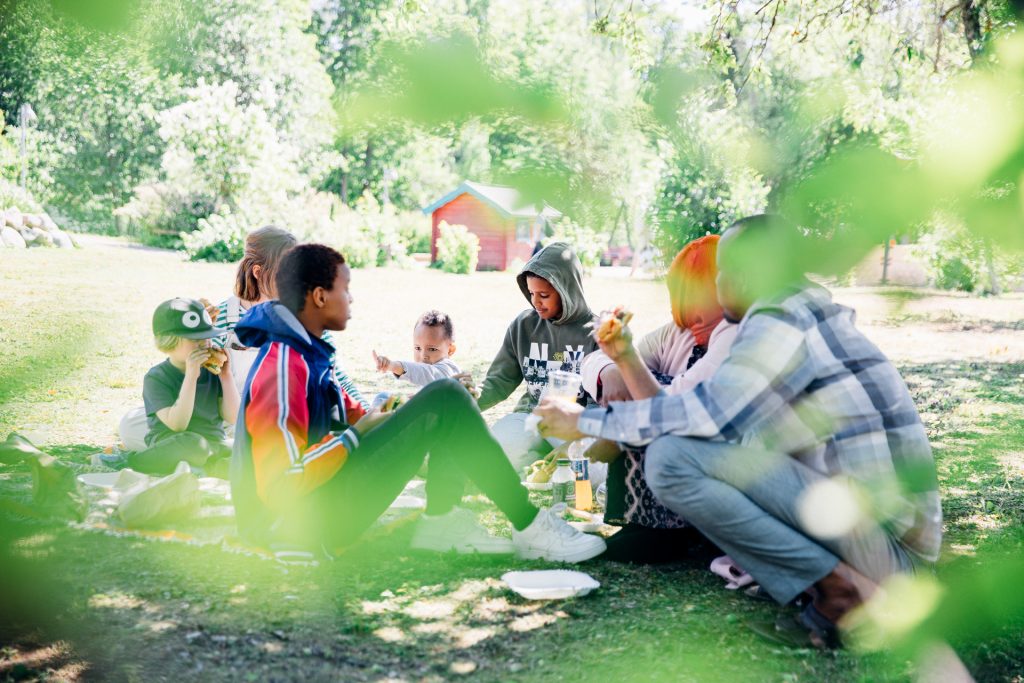The City of Helsinki has approximately 70 playgrounds where instructed, open-to-all and free-of-charge activities are offered for families with children and children of school age. The playgrounds are popular gathering places and their activities strengthen the community spirit of the area and the attachment of families to the residential area.
The playgrounds are a specialty of Helsinki: similar activities cannot be found anywhere else in Finland, at least on a city-wide scale.
Playground activities have been enjoyed in Helsinki for over 100 years, and year-round activities have been offered to city residents since 1951. The City started to offer free meals at Helsinki playgrounds in 1942, when food shortage tormented most people in Helsinki.
The playgrounds combine city services of different sectors: the Education Division is responsible for the playground activities and facilities and the Urban Environment Division is responsible for the planning, maintenance of the playground areas and the safety of the equipment
Playgrounds to promote equality and well-being
The playground design project started in 2020 as part of a project aimed to strengthen the integration of immigrant families. The MAMANET study of Tampere University established that people originating from other cultures did not necessarily differentiate Helsinki’s playgrounds from daycare centre yards and that activities in certain areas on weekdays before noon did not reach immigrant groups due to the different daily rhythms.
Families with immigrant background did not use playgrounds to the same extent as native Finnish families and thus missed opportunities to participate in activities that would promote integration and well-being of families with children
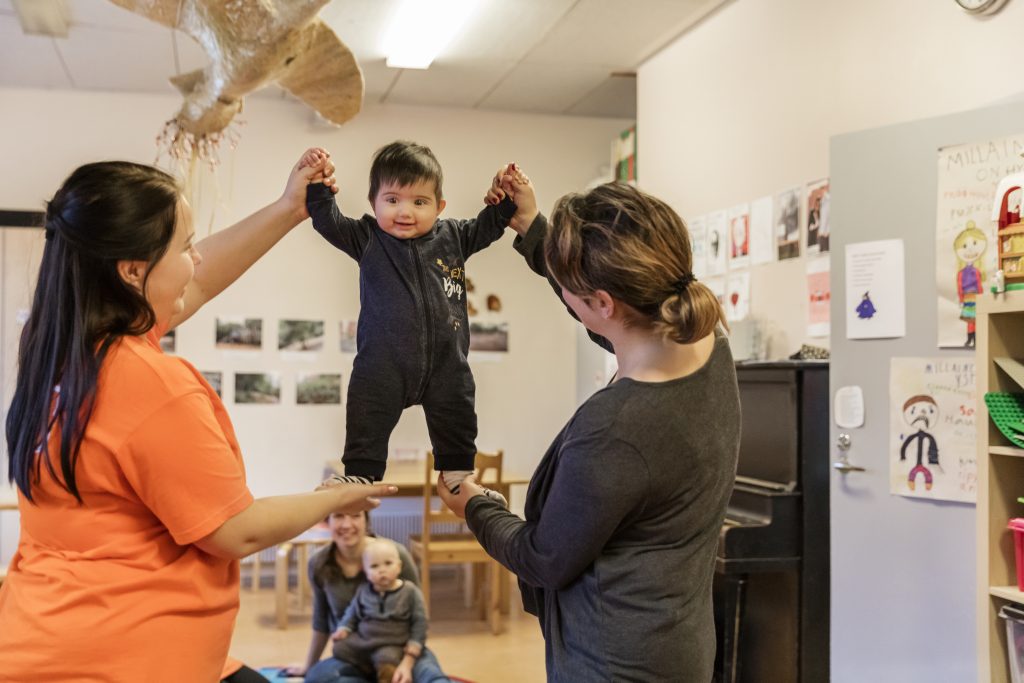
Helsinki needs good and functional playgrounds to serve as pull factors, especially in areas of complementary construction, urban environment development in general and balancing the housing structure of the city districts.
For the design project five pilot playgrounds were selected from the urban renewal areas of Kontula, Kannelmäki, Malminkartano and Mellunmäki.
From gathering user understanding to co-creation workshops
In the playground design project, the city partnered with the design agency Pentagon Design. The aim was to increase the accessibility, recognition and appeal of the playgrounds through design, making use of a process involving city residents and personnel, and to produce ideas for the development of playground services and the physical environment. There was also an option to commercialise a physical solution that would make playgrounds more recognisable.
The project started with interviews and observations made at the pilot playgrounds. These were complemented by gathering user understanding through an online survey in the Voice your opinion service. A total of 558 city residents responded to the survey.
From the outset, it was important that the project also reached potential users of the playgrounds and families with an immigrant background. They were reached, for example through organisations and interest groups.
It became clear during the very first discussions that this is a more complex challenge than expected: even native Finns are not as well-informed of playgrounds and the services they provide as one might think, sometimes communications do not reach the target group or are difficult to understand and playgrounds are not recognised in the urban environment.
On the basis of the report, the accessibility and appeal of playgrounds from the perspective of different resident groups were established as clear challenges. Special attention was paid to promoting the integration of families with an immigrant background and, at the same time, to promoting equal urban development in a wider sense by developing playgrounds
Objectives of the design project
- To develop the playgrounds into a service that attracts all families with children and promotes well-being.
- To turn the playgrounds into recognisable and attractive places in the urban environment.
- To promote encounters between different population groups, attachment to the residential areas and integration of immigrant families.
- To reduce regional segregation and increase the appeal of the urban renewal areas in the eyes of all families with children.
Once the challenge had been established, we proceeded to the creation of the design guidelines and the concept-level entity together with users and playground instructors in workshops. The customer path of playground users took shape and the appeal factors of playgrounds were specified.
Elements of an attractive playground
- Communications that reach and address the target groups
- Easy to find and attractive playground environment
- Safe, comfortable and clean play area
- Distinctive, activating and high-quality themed playgrounds
- Up-to-date and accessible communications in the playground environment
- Cosy facilities that can also be used independently
- Low-threshold activities that take into consideration different customer needs
- Warm and professional staff and guidance
- Partner network and family services accessible
- A welcoming, participatory and diverse community
Playground communications to be developed
Communications came to play a key role in improving the accessibility of the playgrounds. The playgrounds should be seen by residents as a uniform service in terms of the urban environment solutions, interactions with the staff and the digital channels of the different playgrounds.
Development measures in order to improve communications:
- Promoting multilingualism and comprehensibility in communications
- Clarifying the roles of communication channels
- Improving the quality and appeal of communications
- Promoting easy availability of information and communications in multiple channels with a wide coverage
- Training staff in making accessible communications in the daily operations of the playgrounds and encountering city residents
Playgrounds to be turned into attractive and recognisable gathering places for families with children
The design project resulted in a solution package for the development of playground services, communications and service environments, indoor and outdoor spaces as well as different communication channels and sign posts.


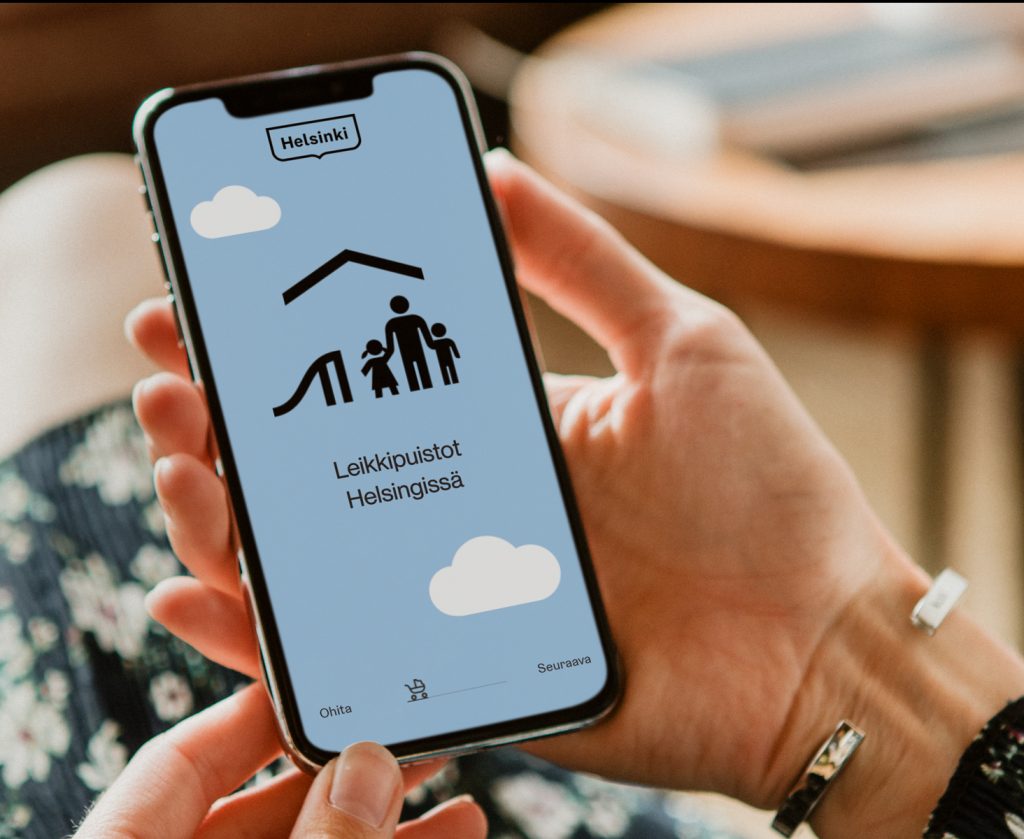

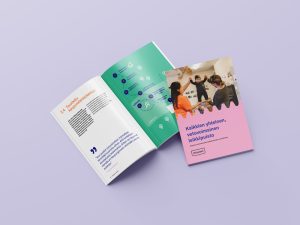

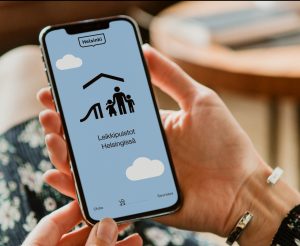
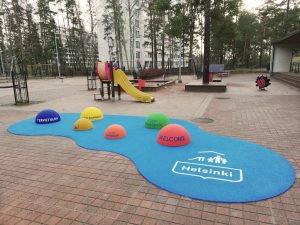
Guide for accessible and appealing communications clarifies the roles of communication channels and encourages staff to make high-quality and accessible communications.
Guidelines for designing attractive playgrounds is especially intended for the city divisions working with playgrounds for the customer-oriented development of the playground environment and activities and supporting cooperation across division boundaries.
Window stickers were designed, in line with the visual identity guidelines of the City of Helsinki, for use by the playgrounds so that they can be easily recognised as playgrounds and spotted in the urban environment. The window stickers improve communications about the activities of the playgrounds in a comprehensive and appealing manner – also from the perspective of children and users speaking different languages.
The Oma leikkipuisto (My playground) logo was created as a symbol of the Helsinki playgrounds and to be used in the Leikkipuistot Helsinki (Playgrounds Helsinki) app and in communications of the Urban Environment Division.
Co-creation resulted in a leap stone element for the playgrounds, where each leap stone carries a welcoming message in a different language. The element improves the recognition and appeal of playgrounds and serves as a tool for multilingual communication.
At the end of the design project, the designers organised two virtual workshops for the staff of the pilot playgrounds. The workshops and a work package helped the staff to implement the lessons learnt from the project at the playgrounds, and thus to implement more resident-oriented and consistent communications as part of the daily activities of the playgrounds.
Designers to see things through the eyes of residents
The playground development project showed how the original perspective was expanded with the help of design methods and brought out the different points of view of city residents to those designing services. Design helped to ensure that all groups have been genuinely heard.
The external developer design agency acted as a neutral operator, bringing together the different parties of the project. The design agency has ready-made tools that can be used to gather user understanding and to create functional solutions from different perspectives.
Design helps to make the gathered understanding visible and to create solutions that improve the experience of city residents.
Using design in the playground development project also strengthened cooperation between the city’s different divisions. At the same time, it taught the city new ways of working and strengthened the understanding that things can and should be done together.
The playground design project is on the shortlist in Grafia’s non-profit Vuoden Huiput 2021 creative design competition in the series for Services.
Pictures: Jussi Hellsten, Pentagon Design, Jefunne Gimpel, Maarit Mustonen, Kaisa Kuusniemi

